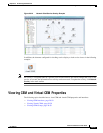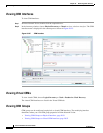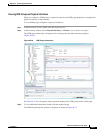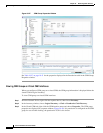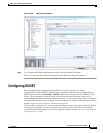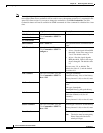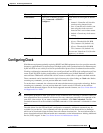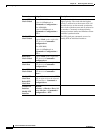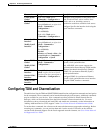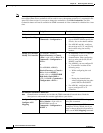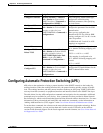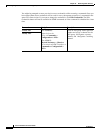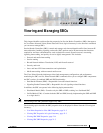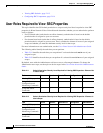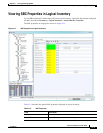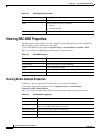
20-57
Cisco Prime Network 4.0 User Guide
OL-29343-01
Chapter 20 Monitoring MToP Services
Configuring TDM and Channelization
Configuring TDM and Channelization
The table below lists the TDM and SONET/SDH channelization configuration commands and navigation
for the commands. These commands can be launched from the physical inventory. Additional commands
may be available for your devices. New commands are often provided in Prime Network Device
Packages, which can be downloaded from the Prime Network software download site. For more
information on how to download and install DPs and enable new commands, see the information on
“Adding Additional Device (VNE) support” in the Cisco Prime Network 4.0 Administrator Guide.
To run the these commands, the software on the network element must support the technology. Before
executing any commands, you can preview them and view the results. For details on the software
versions Prime Network supports for the listed supported network elements, see Cisco Prime Network
4.0 Supported Cisco VNEs.
Create SyncE
Global
Right-click Clock node >
Commands > Configuration >
Configure clock properties at the global level
such as hold-off time, wait to restore, force
switch, and so on, that helps routers to
synchronize to the best available clock source.
Configure SyncE at the interface level using the
SyncE interface commands.
Modify SyncE
Global
(For ASR901, ASR903):
Expand Clock node > right-click
SyncE> Commands >
Configuration >
(For ASR9000):
Right-click Clock node >
Commands > Configuration >
Create SyncE
Interface
Modify SyncE
Interface
(For ASR901, ASR903):
Expand Clock node > right-click
SyncE> Commands >
Configuration >
(For ASR9000):
Physical
inventory > Chassis > Slot > Sel
ect an interface > Commands >
Configuration > SyncE
Create ESMC
Global
Modify ESMC
Global
Expand Clock node > right-click
SyncE> Commands >
Configuration >
Configure ESMC for synchronous Ethernet
(SyncE) clock synchronization.
Only ASR 9003 series router supports the
Synchronization Status Message (SSM) and the
Ethernet Synchronization Message Channel
(ESMC) for synchronous Ethernet (SyncE)
clock synchronization.
Configure ESMC for synchronous Ethernet
(SyncE) clock synchronization on an interface
using the ESMC interface commands.
Create ESMC
Interface
Disable ESMC
Interface
Expand Clock node > select
SyncE > right-click on a SyncE
Interface from the content pane >
Commands > Configuration >
Modify ESMC
Interface
Command Navigation Description



